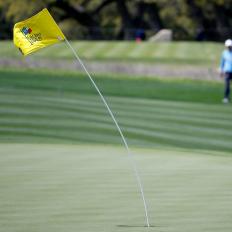Five Steps To A Solid Swing
ADDRESS: TAKE A PUNCH
Don't let the name of this first magic move scare you. I'm not going to punch you in the stomach. But I do want you to take your stance as if someone were about to. As you suck in your abs to brace yourself, feel the rest of your body loosen and your shoulders round forward. A little rounding is good. You want your arms to hang free and athletic (pictured).I see students who've taken every idea associated with good posture and pushed them too far. They got the butt way out and the back as straight as a board to try to
create the perfect spine angle.You need to relax, yet engage your core. Bracing for a punch in the gut makes this automatic.
TAKEAWAY: GO UP AND AROUND
The first few feet of the swing trips up a lot of golfers. A proper takeaway requires a rotary motion, or turning of the body to draw the clubhead away from the target line, along with an up-and-down motion to bring the clubhead over the back shoulder. A proper blending of these two motions creates a sound swing plane.Confused? Don't worry. All you need to think is, Up and around. As your arms swing away from the ball, encourage the wrists to work the clubhead up as the hips rotate around (pictured). People tend to reverse the sequence—the hands swinging the clubhead around too much and the body lifting up. That pattern leads to poor results.
BACKSWING: PLAY KEEP AWAY
At the top of the backswing, a common mistake is to let the arms fold too close to the body. Golfers hear all the time that it's important to have a "wide swing arc," but that image alone often falls short. A good thought to get and maintain width is, Play keep away. As in, keep your right hand as far from your right shoulder as possible (pictured). Maintain that feeling throughout the backswing.What can help is to imagine you take your setup in the middle of a room. Swing back, and pause at the top, pushing your hands toward the back-right corner of the ceiling. Feel the stretch, and become aware of the muscles that support the club in that position.
IMPACT: CUT THE GRASS
A vivid childhood memory for me is the time my neighbor mowed his lawn and forgot to put the blade down. He drove around in circles without accomplishing anything.I often think of this on the lesson tee and tell students: "Cut the grass." By this I mean, picture the leading edge of the iron as a mower blade. Your goal is to sever the blades of grass in front of the ball.Average golfers tend to swing down too steep and add loft to the club by scooping with their wrists. Trying to cut the grass encourages a shallow pass with the shaft leaning forward (pictured). Because this delofts the face slightly, don't be surprised when—presto!—you're suddenly a full club longer.
FINISH: BREAK THE TAPE
At the end of a race, a good runner goes all out to cross the finish line first. To claim victory on the golf course, I want you to have a similar mind-set as your hips "break the tape" in your swing.Through impact, push your belt buckle up and toward the target with authority. At the finish, the buckle should be closer to the target than anything else (pictured).This move is magic for golfers who hang back. Ideally, the hips and club handle begin to rise through impact. But it's all about timing: Lifting out of your posture before impact is called early extension, and you don't want that. Thrusting up as you move through the ball will get you smoking it.Jeff Ritter is founder of MTT Performance, a Golf Channel Academy located at Poppy Hills Golf Course in Pebble Beach.
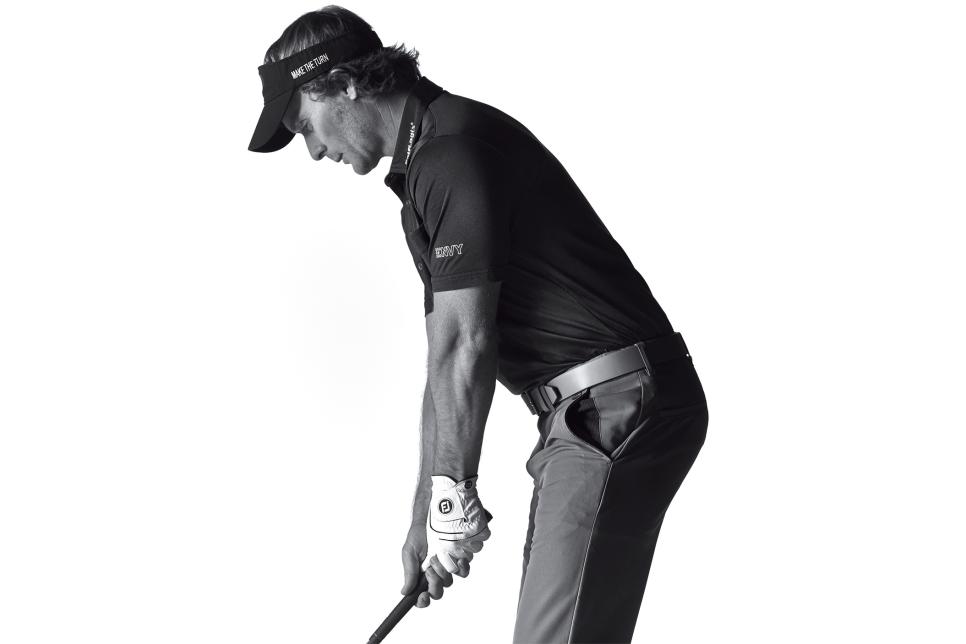

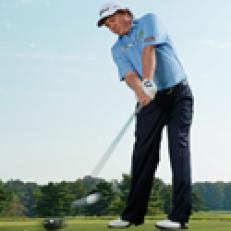
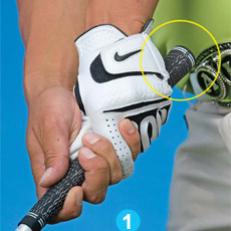
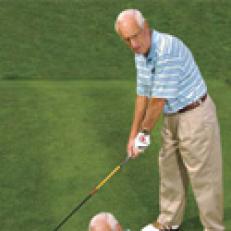
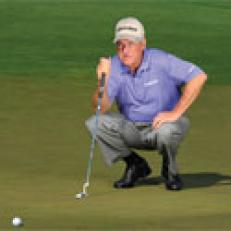
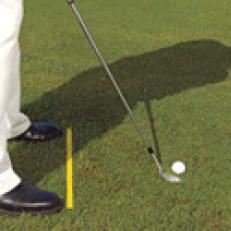

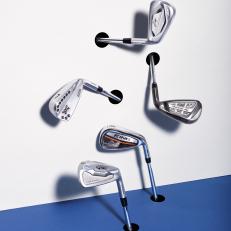
, by Butch Harmon](http://golfdigest.sports.sndimg.com/content/dam/images/golfdigest/fullset/2015/08/13/55cd233a4759c60c0823685b_instruction-2015-07-insl01-half-speed-range.jpg.rend.hgtvcom.231.231.suffix/1573513418838.jpeg)

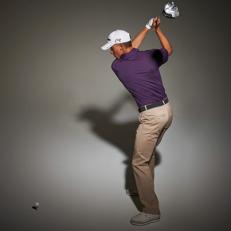
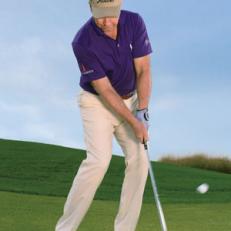
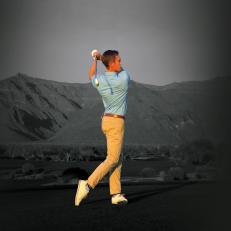
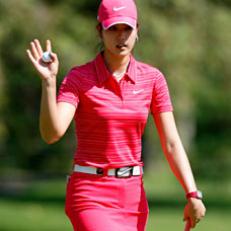
.jpg.rend.hgtvcom.231.231.suffix/1702689812781.jpeg)
